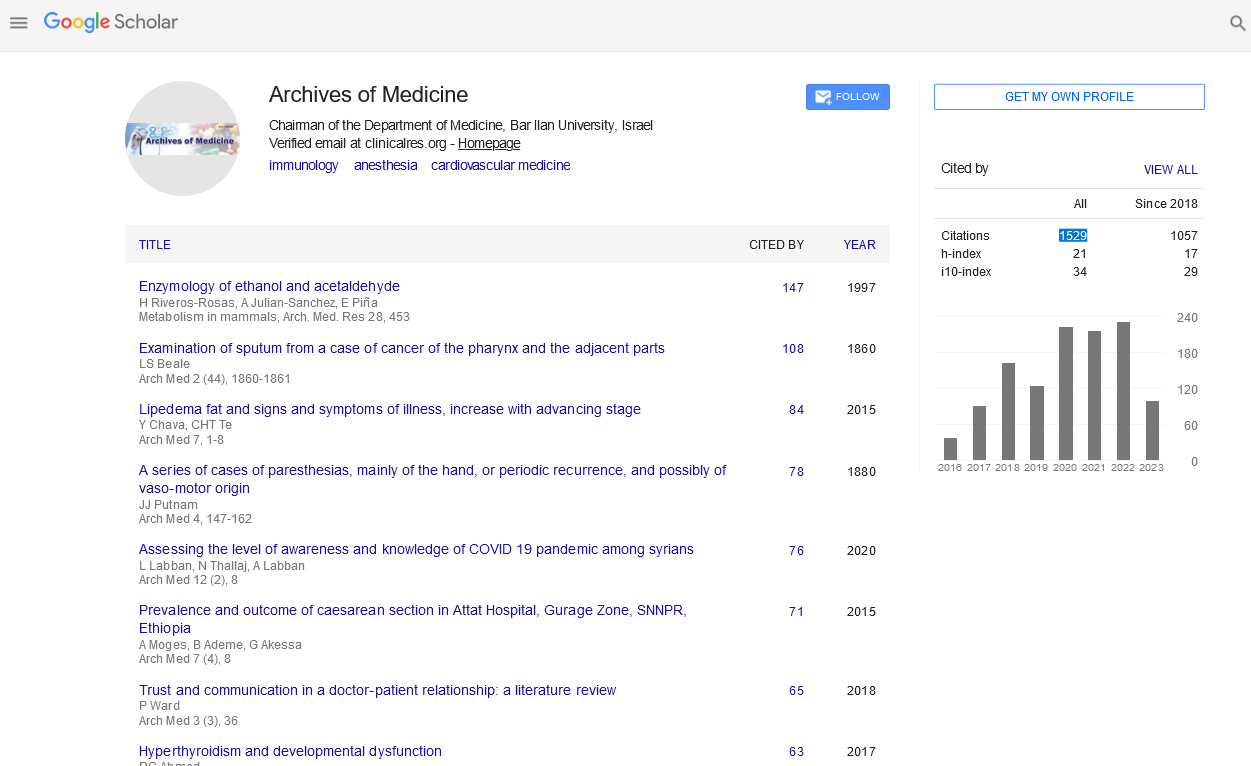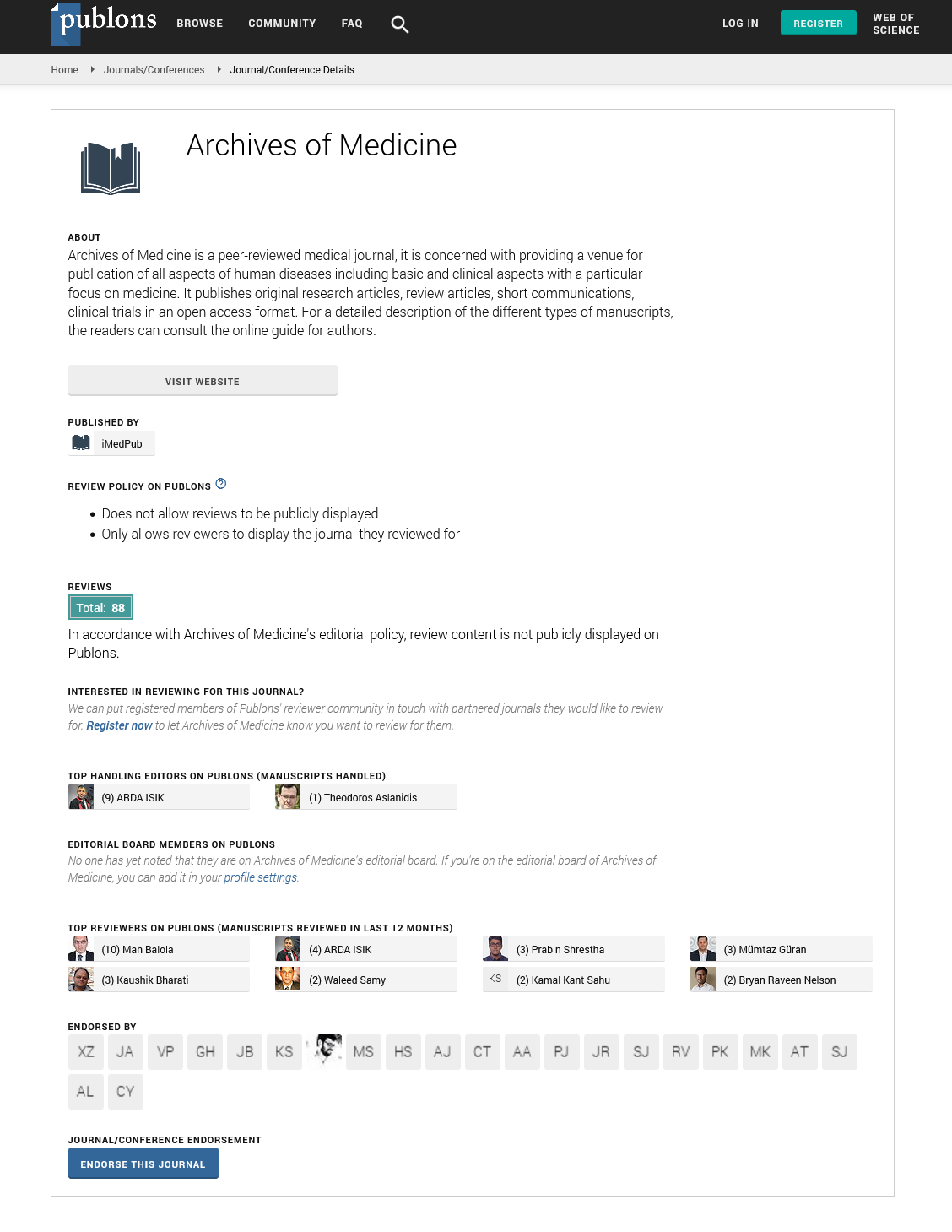Case Report - (2022) Volume 14, Issue 3
Non-dilated obstructive uropathy
Issa Kawalit*,
Muhand Eltwal,
Erfai Emtair,
Rama Nakdali and
Laith Al-Rabadi
Director of Renal Department, Royal Bahrain Hospital, Bahrain
Chief Medical Officers, New England Sini Hospital, MA, USA
Department of Urology, Royal Bahrain Hospital, Bahrain
Department of Internal Medicine, Royal Bahrain Hospital, Bahrain
Assistant Professor, Renal Division, University of Utah Hospital, UT, USA
*Correspondence:
Issa Kawalit, Director of Renal Department, Royal Bahrain Hospital,
Bahrain,
Email:
Received: 25-Jan-2022, Manuscript No. ipaom-22-12392;
Editor assigned: 28-Jan-2022, Pre QC No. P-12392;
Reviewed: 17-Feb-2022, QC No. Q-12392;
Revised: 22-Feb-2022, Manuscript No. R-12392;
Published:
10-Mar-2022
Abstract
Recent Urinary tract obstruction leading to acute kidney injury (AKI)
is commonly associated with hydro ureter and hydro nephrosis,
often accompanied by oliguria. AKI and the syndrome of Non-
Dilated Obstructive Uropathy (NDOU) is well reported, however, it
is not common, accounting for less than 4% of obstructive uropathy
cases. Our recent experience with two cases of NDOU seen within
the span of six months may imply otherwise. We present two cases
of obstructive uropathy without sonographic features of obstructive
uropathy with acute renal failure. Two elderly male patients
presented at Royal Bahrain Hospital Nephrology Centre with an
acute rise in serum creatinine, without active urinary sediment or
proteinuria. Imaging studies showed normal size kidneys without
hydronephrotic changes. Initially, they were diagnosed with prerenal
azotemia secondary to volume depletion, and they were
treated with intravenous fluids which failed to improve the kidney
function. Repeated imaging showed bladder fullness with prostate
hypertrophy, therefore NDOU was diagnosed. Both patients’ urinary
obstruction was relieved resulting in recovery of the kidney injury.
Keywords
Microbiome; Endometrium; Lactobacilli; Gynecologic
conditions.
Introduction
Acute kidney injury secondary to obstruction is typically
characterized by bilateral hydronephrosis [1]. However,
under certain clinical conditions, renal imaging may still
fail to demonstrate hydronephrosis [2-6]. This medical
presentation can be attributed to a variety of clinicpathologic
conditions including volume depletion, severe
oliguria, acute early obstruction, and inability of the
collecting system to dilate because of infiltrative abdominalpelvic
disease such as metastatic cancer or retroperitoneal
fibrosis [4-9]. Our recent experience with two cases of
NDOU at Royal Bahrain Hospital within a six monthperiod
prompted this report.
Case Presentation
Case 1
A 63-year-old male patient with longstanding history of
hypertension, well controlled with Angiotensin receptor
blockers (ARBs), and a recent serum creatinine of 90 μmol/L
presented to our clinic with worsening anorexia, nausea,
vomiting, and oliguria. One week ago, he was diagnosed
and treated for urinary tract infection (UTI). Blood
pressure was 155/89 mmHg, and he was not orthostatic.
Serum creatinine was 390 μmol/L and potassium 5.5
mmol/L. Urinalysis showed 5– 10 WBC PHF and 2–5
RBC PHF without proteinuria. Alanine transaminase
(ALT), aspartate transaminase (AST), and total creatine
kinase (CK) levels were normal. Renal ultrasound and
doppler showed normal appearing kidneys with postvoid
urinary bladder scan showing 50 mL of residual
urine and a large prostate. The next day, he had increased
vomiting, oliguria, with serum creatinine trending upto
455 μmol/L, with potassium elevated at 5.7 mmol/L. A
non-contrast computerized tomography (CT) examination
was normal except for fullness in the urinary bladder.
Foley catheter was inserted with an immediate output
of 400mL. The patient was diagnosed with acute kidney
injury secondary to obstructive uropathy, and urology
team was consulted. The patient’s symptoms stabilized after
a few days with recovery of his kidney function. He was
treated conservatively with alpha blockers and eventually
underwent transurethral resection of the prostate. After 8
weeks, his serum creatinine trended down to 109 μmol/L.
The pathology report revealed low grade prostate cancer.
Case 2
A 67-year-old man with a history of coronary artery
stenting, peripheral arterial disease (PAD), hypertension,
type II diabetes mellitus, benign prostatic hyperplasia and
chronic kidney disease (baseline serum creatinine of 135
μmol/L) presented to our clinic complaining of headache,
malaise, fatigue, urinary frequency and decreasing urine
output. He was vitally stable and afebrile. His blood work
showed an increase in serum creatinine of 330 μmol/L,
hyperkalemia (3.6 mmol/l) and hyperphosphatemia (5.1
mg/dl.). Renal sonogram revealed normal size kidneys
without hydronephrotic changes. NDOU was suspected
following a nephrology consultation ruling out renal disease.
As a result, he underwent a post-void bladder ultrasound
which confirmed urinary retention. Foley catheter
placement quickly drained 350 cc of amber-colored clear
urine. Hyperkalemia, and hyperphosphatemia, together
with serum creatinine, improved and serum creatinine
decreased to 150 μmol/L four days later. The Foley catheter
was removed against medical advice. The next two day, his
serum creatinine increased to 170 μmol/L and 205μmol/L
respectively – a very clear affirmation of the presence of
NDOU, most likely from an enlarged prostate. Because
medical treatment failed to control his obstructive uropathy
he underwent TURP, and his kidney function recovered to
baseline.
Discussion
Acute kidney injury is characterized by abrupt
deterioration in renal function, manifested by a rise in
serum creatinine level with or without decrease in urine
output. The spectrum of renal injury ranges from mild
to severe, sometimes requiring renal replacement therapy.
The diagnostic evaluation can be used to classify acute
kidney injury as pre-renal, renal, or post-renal [10,11].
The initial workup includes the patient history to identify
the use of nephrotoxic agents or the presence of systemic
disease that might cause poor renal perfusion or directly
impair renal function. Physical examination should assess
intravascular volume status and identify signs of systemic
illness. The initial laboratory evaluation should include measurement of complete blood count, serum creatinine
level, and urinalysis. Ultrasonography of the kidneys
should be performed, particularly in older men, to rule out
obstruction.
Most physicians don’t suspect post renal AKI unless
hydronephrotic changes are present. However, post renal
AKI can present without hydronephrotic changes, as noted
in the early stage of obstruction, or with retroperitoneal
fibrosis [11,12]
Conclusion
The syndrome of NDOU and AKI has been frequently
reported but not well studied. The literature suggests
that it is a rare syndrome. In this report, we describe our
recent experience with two cases of NDOU seen within
the span of 6 months. Despite the absence of dilatation
on renal imaging, strong suspicion for NDOU led to
decompression procedures with prompt recovery of kidney
function in both patients. We believe that NDOU may be
more common than previously speculated, and a high index
of suspicion, coupled with a high level of collaboration
between Nephrology, Urology, and Radiology, can lead
to a higher rate of detection of such cases. Furthermore,
we noted the relative ease of reversing uremia by early
decompression therapy, and the prevention of potentially
irreversible end-stage renal disease, if left untreated.
Conflicts of Interest
The authors declare no competing interests.
All authors declare that the material has not been published
elsewhere, or has not been submitted to another publisher.
Data Availability
Authors declare that all related data are available concerning
researchers by the corresponding author's email.
Acknowledgments
The views presented in this paper are of the authors and not
of the organizations they represent.
REFERENCES
- Chin GK, McGonigle RJ. Non-surgical cause of hydronephrosis: retroperitoneal fibrosis. Intern Med J. 2007; 37:136-137.
Google Scholar, Crossref
- Maillet PJ, Pelle-Francoz D, Laville M, et al. Nondilated obstructive acute renal failure: Diagnostic procedures and therapeutic management. Radiology. 1986; 160(3):659–662.
Google Scholar, Crossref
- Kocurek JN, Orihuela E, Saltzstein DR. Nondilated obstructive uropathy and renal failure as a result of carcinoma of the intrapelvic area. Surg Gynecol Obstet.1991; 173:470–472.
Google Scholar, Crossref
- Onuigbo M, Lawrence K, Park S. Retroperitoneal fibrosis: Unusual cause of low back pain. South Med J. 2001;94:735–737.
Google Scholar, Crossref
- Rascoff JH, Golden RA, Spinowitz BS, et al .Nondilated obstructive nephropathy. Arch Intern Med. 1983; 143:696.
Google Scholar, Crossref
- Naidich JB, Rackson ME, Mossey RT, et al. Nondilated obstructive uropathy: Percutaneous nephrostomy performed to reverse renal failure. Radiology. 1986; 160:653–657.
Google Scholar, Crossref
- Lyons K, Matthews P, Evans C. Obstructive uropathy without dilatation: A potential diagnostic pitfall. Br Med J. 1988; 296:1517–1518.
Google Scholar, Crossref
- Spital A, Valvo JR, Segal AJ. Nondilated obstructive uropathy. Urology. 1988; 3:478–482.
Google Scholar, Crossref
- Onuigbo MAC. Symptomatic uremia from bilateral obstructive uropathy secondary to metastatic urinary bladder cancer showing only unilateral hydronephrosis: A case report. NDT Plus. 2009;2:387-389.
Google Scholar, Crossref
- Lameire N, Van Biesen W, Vanholder R. Acute renal failure. Lancet 2005; 365: 417-430.
- Brady HR., Singer GG. Acute renal failure. Lancet 1995; 346: 1533- 1540.
Google Scholar
- Rascoff JH, Golden RA, et al. Diagnosis of urinary tract obstruction and hydronephrosis In Nondilated obstructive nephropathy. Arch Intern Med 1983; 143: 696.
Google Scholar






